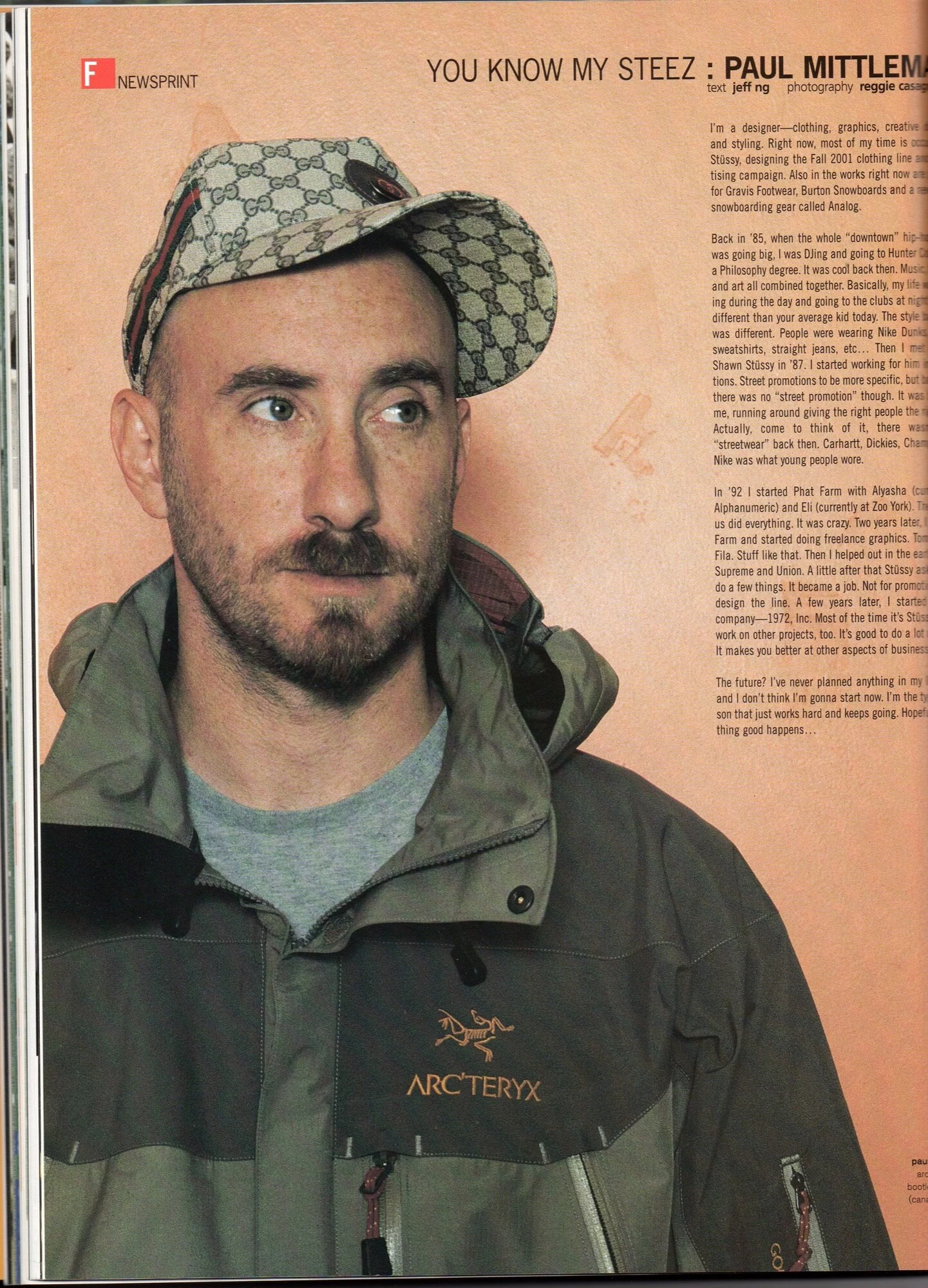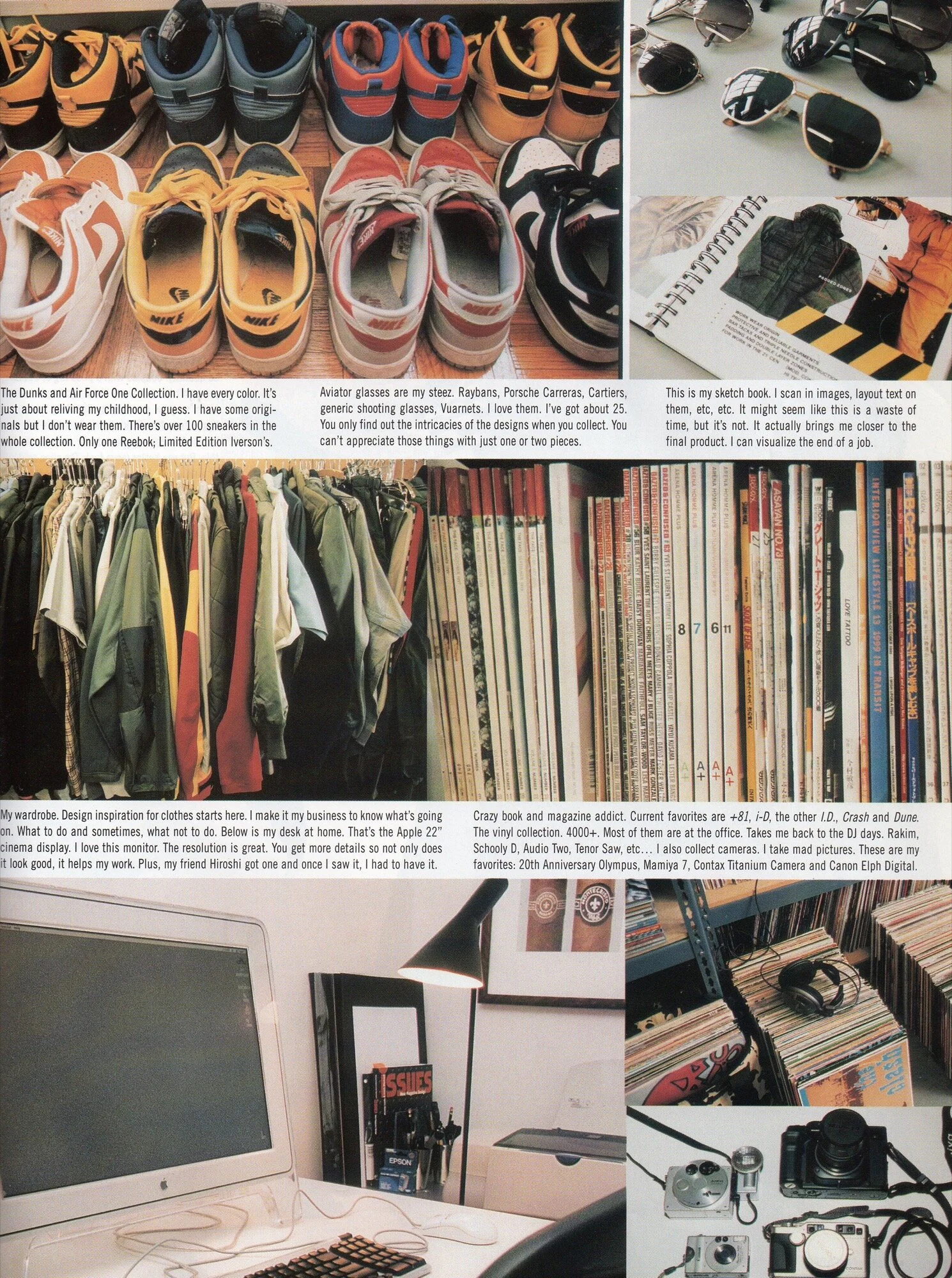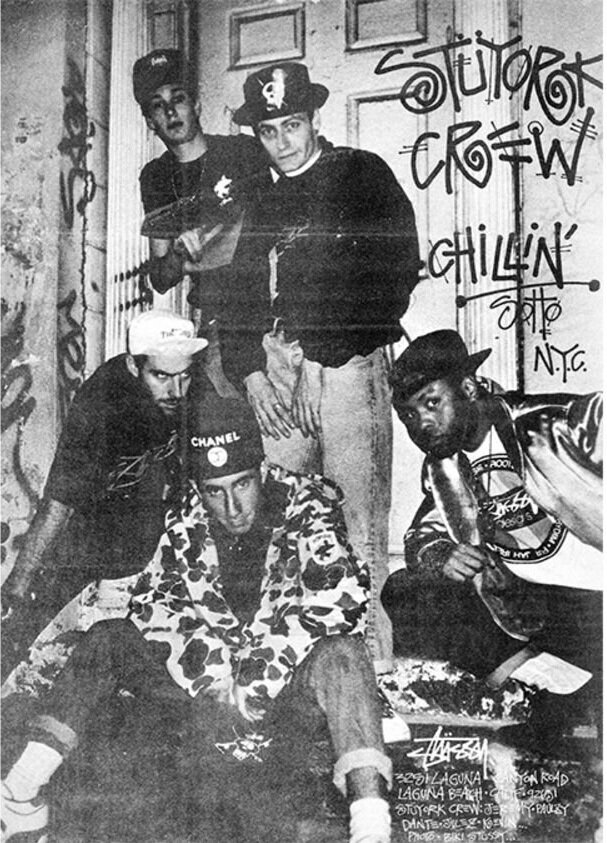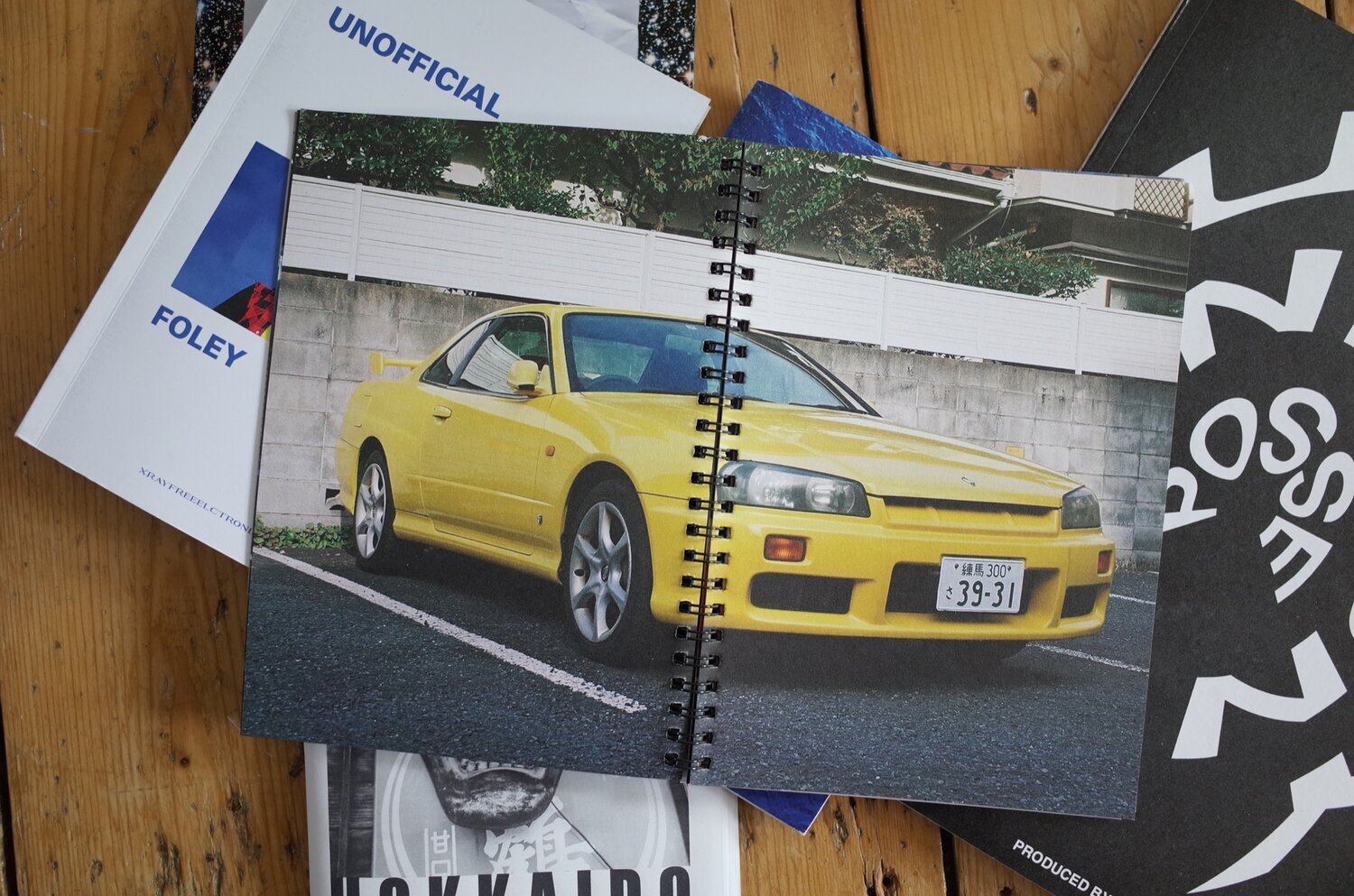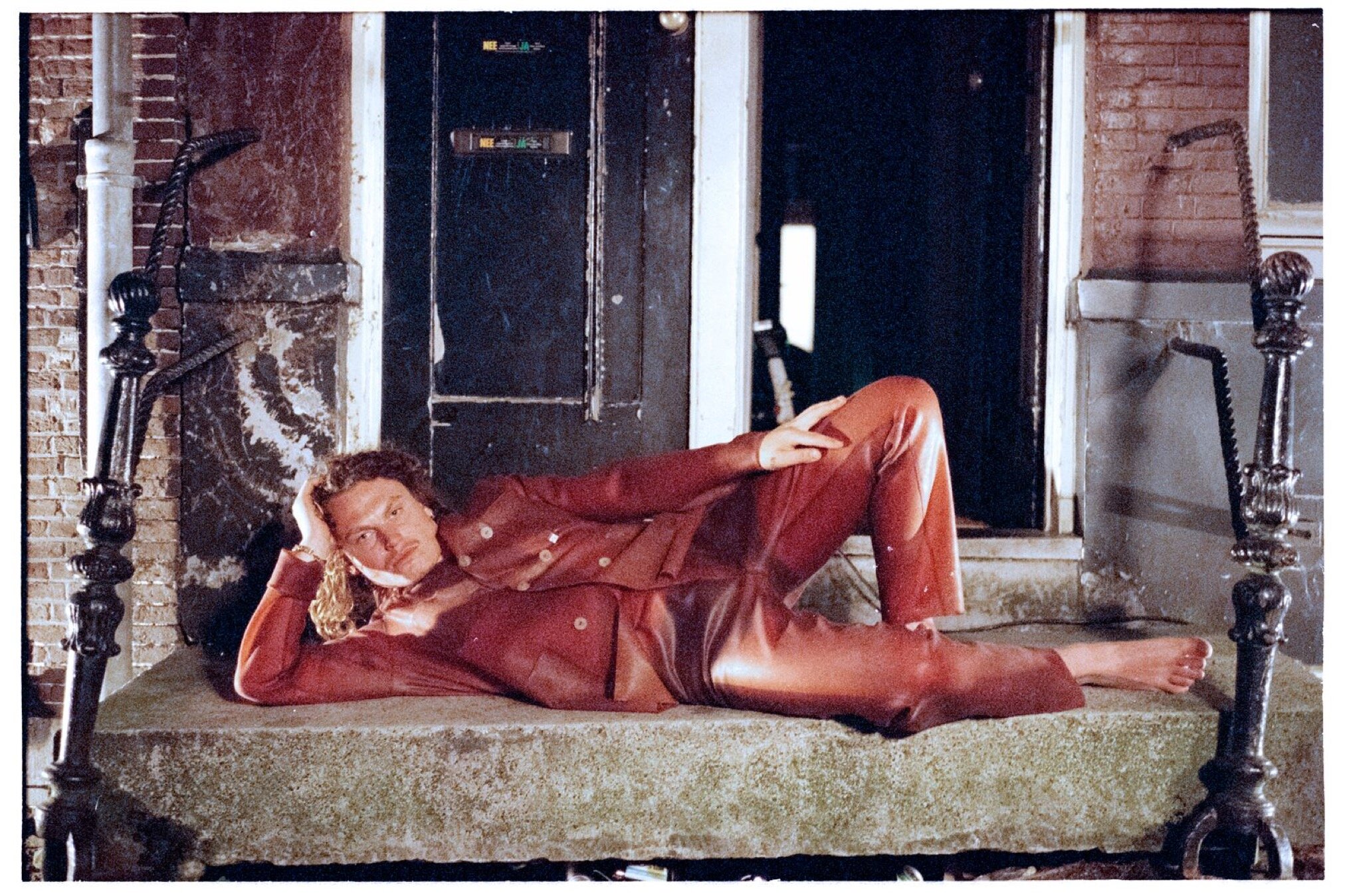YOUR FAVORITE OG’S FAVORITE OG – MEET PAUL MITTLEMAN
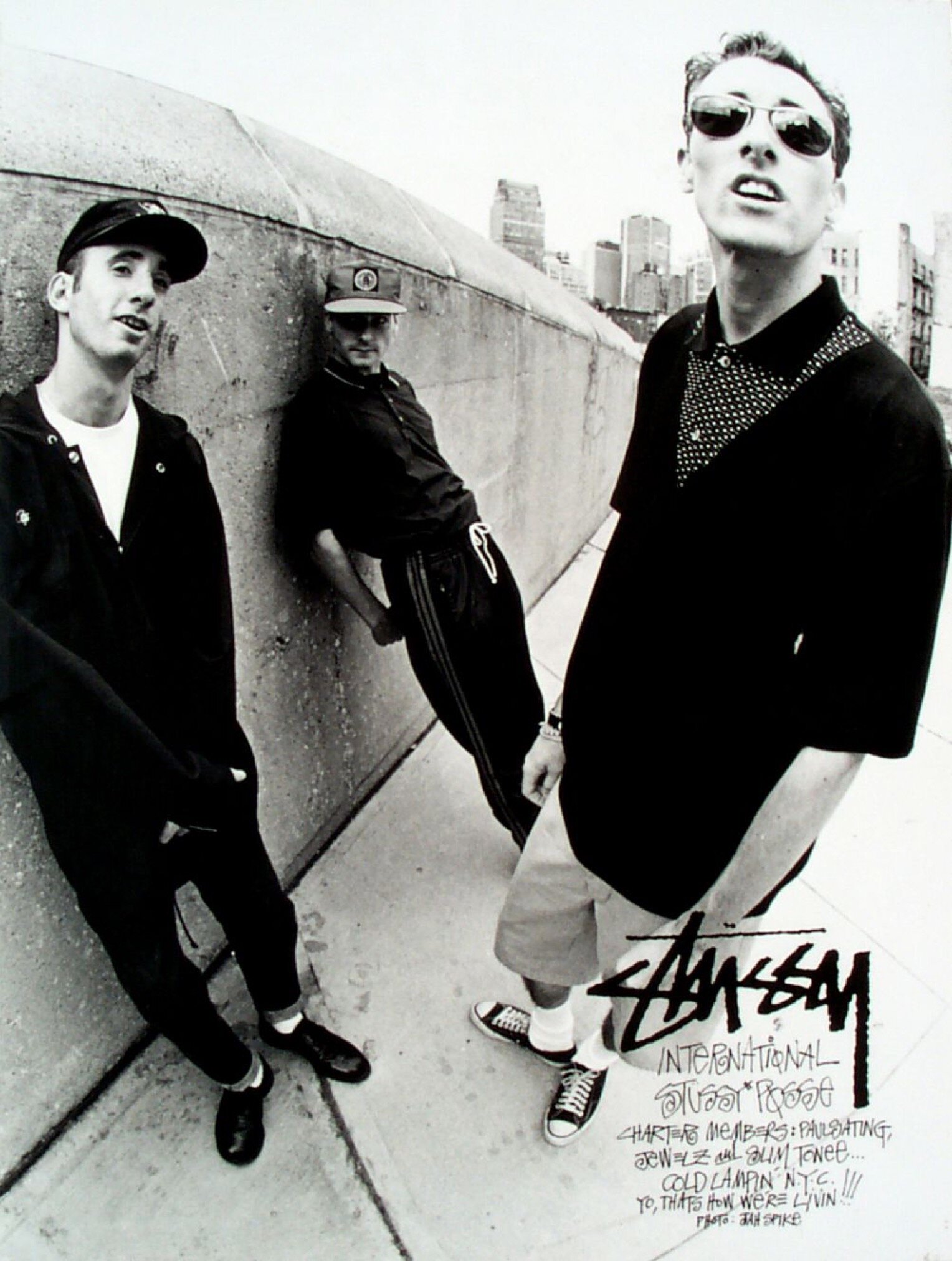
When Paul Mittleman was among the people who laid the foundation for the streetwear phenomenon, the term did not even exist yet.
Over decades, he has proven to have a precise feeling for youth culture and a clear vision for its future at any given stage. Although Paul might not always have been directly in the spotlight, he is pushing things forward behind the scenes and regularly makes cameo appearances at crucial points in streetwear history– a bit like Alfred Hitchcock maybe, but without the god complex. He was a columnist on the early iteration of the iconic honeyee.com site, a co-founder of Phat Farm, and even once had a piece of artwork exhibited in a MoMA group show.
Photograph by Greg Washington
Born in New York City, Paul got into skateboarding and music at a young age. Going to clubs like the legendary Area, he dived into NYC’s creative downtown scene. As the son of a clothing store owner, he learned about the mechanics of the apparel business by helping his father buy inventory for the shop. All those skills put him in a perfect position to help Shawn Stüssy establish his namesake brand and to be a founding member of the iconic International Stüssy Tribe.
2001, Paul Mittleman in The Fader
Later, he shaped the brand’s direction as creative director for over seventeen years, before having creative director roles at adidas Originals and Converse. In those functions, he was also a pioneer in product collaborations – a concept that reigns supreme in today’s brand-driven fashion and sneaker industries. As an intermediary, he lets the circles in cultural Venn diagrams overlap.
We talked to Paul about his career as a creative nomad in the streetwear business, and what his thoughts are about the current state of the industry as well as its future.
DEAR PAUL, CAN YOU PLEASE BRIEFLY INTRODUCE YOURSELF TO THE SABUKARU NETWORK?
My name is Paul Mittleman and I’ve done a lot of things around street culture and streetwear for the last thirty years. It’s exciting to talk about it with you all.
YOU ARE AN ORIGINAL MEMBER OF THE GROUNDBREAKING INTERNATIONAL STÜSSY TRIBE. IT WOULD BE INTERESTING TO HEAR WHAT YOU THINK ABOUT CONTEMPORARY STYLE TRIBES. ARE THERE EVEN ANY STYLE TRIBES WITH A SPECIFIC STYLE OF CLOTHING AS A CLEAR IDENTIFIER FOR THEIR SUBCULTURE?
I don’t know if there is anything as formal as [the I.S.T.] with a name. That was a unique time and look, but there were also fewer choices. So it seemed a bit easier in a way. I do think there are - let’s say contemporary subcultural style tribes – I just don’t know if they are completely connected to something like that. I think it’s more people that might like a brand or a look and get enamored in that. But then again there might be and I’m just not aware of them formally.
IN THE ’80S YOUR FAMILY OWNED PANDEMONIUM - A VERY POPULAR THRIFT STORE IN NEW YORK CITY.
It was a thrift store and also sold more affordable new clothing. So it was a bit of a mixture.
WHAT ARE YOUR OPINIONS ABOUT THE RAPID RESURGENCE OF SECOND-HAND SHOPPING IN RECENT YEARS - FROM PEOPLE CLEARING OUT THEIR CLOSETS ON A RESALE PLATFORM TO HANDPICKED ARCHIVE FASHION, AND VINTAGE T-SHIRT SOMMELIERS?
It’s good on many levels. It depends on how you look at it. Obviously, I am not really sure about buying a vintage t-shirt for a thousand dollars, but so be it. It’s good from a sustainability perspective for people to reuse clothing. That’s a nice modern twist on it. Also, it’s the basis of your personal style. It’s not a store telling you what to get. You have to figure out what you like. I think vintage, thrift, and resell – well, resell is a different animal – are quite important.
DO YOU STILL GO DIGGING FOR VINTAGE CLOTHES SOMETIMES?
I don’t. My daughter is younger and she does but I’m not really buying that much stuff anymore.
ARE THERE DIFFERENCES IN WHAT YOUR DAUGHTER AND HER FRIENDS MIGHT LOOK FOR WHEN THEY ARE VINTAGE SHOPPING AND WHAT PEOPLE WERE PICKING UP AT PANDEMONIUM IN THE ‘80S?
Back then, there were fewer choices. It was a lot of denim and army stuff, and clothes from the 50s – plaid shirts and flannel shirts. Now you can almost find stuff from the last decade at Goodwill or Salvation Army here. There will be a point soon where you go to a thrift store and it’ll be Bathing Ape and Supreme.
OVER THE YEARS YOU HAVE WITNESSED AND OFTEN WERE ESSENTIALLY INVOLVED IN A HANDFUL OF CULTURES THAT WENT FROM SUB - OR EVEN COUNTER-CULTURE - TO POP. MAY IT BE CERTAIN MUSIC GENRES, SKATEBOARDING, OR STREETWEAR. YOU DESCRIBE YOURSELF AS A “CULTURAL NOMAD“. WHICH ONE OF THOSE SETTLING GROUNDS WOULD YOU SAY HAD THE BIGGEST IMPACT ON YOU OR IS YOUR FAVORITE?
There is a really even split between skateboarding and music. I think the style came from watching stylish skateboarders or people that were around that sport or lifestyle. And then around music, probably mostly different forms of early hip-hop and later punk rock. Those were the early style cues that a lot of people collectively looked at, at the time.
1987,STUSSY NYC CREW: Messrs Jules Gayton, Paul Mittleman, Ross, Kevin Williams and Jeremy Henderson,
SO FOR YOU, THERE WAS THE ACTIVITY FIRST AND THEN THE STYLE THAT CAME ALONG WITH THAT ACTIVITY?
I skated before I knew that hip-hop existed. There always was a music background with lots of types of music, and that was my kind of sport or activity of choice. So I think they both dovetailed. Also, when you go back to what really opened up things for me in the 80s was – talking about thrift – the Beastie Boys. Look at all the early pictures of them. They were mostly wearing thrift clothes. But that was just what everyone wore because there was no streetwear. Rappers might have been more into adidas or Puma, Kangol, Cazal, or whatever. And the Beastie Boys thought “no we’re just going to wear a used Champion sweatshirt and a leatherman jacket”. That goes back to the discussion of how thrift comes into it as a language of what young people wore or could afford. And then you realize streetwear brands just start making the thrift clothing again. That became the reference for what to make.
Where’s Paul? A background appearance in the Beastie Boys’ (You Gotta) Fight For Your Right (To Party) music video. [1986]
IN ANOTHER INTERVIEW, YOU OUTLINED A FAMILY TREE MODEL FOR STREETWEAR. YOU SAID THAT “STÜSSY MAYBE WAS THE FIRST GREAT STREETWEAR BRAND, THEN IT WAS BAPE, THEN IT GOES ON TO BE SUPREME“. WHO DO YOU THINK MIGHT BE NEXT IN THIS LINEAGE? WHO IS CARRYING THE TORCH RIGHT NOW?
I don’t think there will be anybody who will do what any of those brands do, but there will be brands who do something different. I don’t know if a straightforward streetwear brand could maintain or grow to that level today – and that’s not between the skills, design quality, or the work ethic. I think it is just the audience and where we are. A lot of younger people now who are really smart and make good stuff are saying “I can make some t-shirts and sweatshirts and make kind of good money, have fun, and travel to see my friends”. So, it will be interesting to see how many of these brands want to do clothing. The other one is how many will do clothing with a larger brand that pays for it, or will they build it and do it on their own. Not that it matters if you go to a larger brand but it can change the trajectory of what you want to accomplish.
IS THERE A BRAND OR AN ARTIST THAT GOT LOST IN THE STREETWEAR LORE, THAT HAS NOT GOTTEN THE RESPECT OR SPOTLIGHT THEY SHOULD?
Nothing comes to mind, to tell you the truth. Maybe with longer thought, I could find someone. But also, if things get lost, maybe that is just showing that they did not plan it properly.
YOU ONCE SAID "SHOES ARE MORE A QUESTION FOR ME. APPAREL IS AN ANSWER." WE FOUND THAT CONCEPT QUITE INTERESTING. COULD YOU ELABORATE A LITTLE ON THAT MAYBE?
I think it’s many things. Footwear is a bit of a starting point now for what you wear. It could be the color of the shoes, it could be the style, the design, the construction, or the technology. I think shoes start dictating what you're into with your outfit. Of course, you can build your outfit top-down but I would say a lot of people think about their shoes first.
AS FAR AS WE CAN TELL, YOU ARE FIRSTHAND TAKING PART IN BRINGING THE ADIDAS SAMBA BACK TO THE FOREFRONT OF THE COLLECTIVE SNEAKER CONSCIOUSNESS - GETTING IT ON THE FEET OF THE RIGHT PEOPLE AND IN THE HANDS OF THE RIGHT DESIGNERS LIKE GRACE WALES BONNER. WE ARE BIG FANS OF THE SILHOUETTE AND ARE EXCITED TO SEE IT MORE OFTEN RECENTLY.
Just to clarify, the stuff with Grace was done by adidas with nothing to me. I think it fits her style. We saw what she did with it and some people wearing them and thought “wow, this is bubbling up again”. We were more reacting to Instagram and seeing our friends wearing it. Sambas were being made and new ones are coming out, but it was an interesting thing this one. It’s nice to see something a little bit unexpected bubble up from the bottom. I think the simplicity of it, the scale of it and the shape and the last, and obviously, the history of it resonated with certain people. It’s no different than the early Stüssy tribe. Back then, we used to send packages of stuff to people and they wore it. It’s really simple like that. You just have to be timely and know how to maneuver the landscape.
Grace Wales Bonner x adidas Samba [2021]
CAN YOU MAYBE TELL US SOMETHING ABOUT UPCOMING PROJECTS YOU MIGHT HAVE PLANNED FOR THE SAMBA?
There is stuff in the works. I think it is better to be surprised by that kind of stuff. But it is an important shoe for the brand, and there will be new collaborations and colorways coming out.
WE KNOW THAT YOU ARE QUITE INVOLVED IN PHILOSOPHY. YOU REGULARLY SHARE BOOKS ON RELATING TOPICS ONLINE AND ONCE SAID THAT WOULD LIKE TO FINISH A PH.D. IN THE FIELD SOMEDAY. WOULD YOU SAY THAT AN INHERENT PHILOSOPHY OR THOUGHT MODEL IS UNDERLYING THE DIFFERENT SCENES YOU GREW UP IN AND ARE A PART OF?
I think that was something that kept me really busy in university and I still read a bit. Being outside of an academy it’s kind of hard to share those thoughts. For the most part, I go back to modern and contemporary philosophy. Certain parts that with existential ideas of phenomenology. Then some things go into post-modern or post-structural ideas about ownership, authority, gender, or production. A lot of things from the Frankfurt School interest me. But I’m not as deep into it as I was just because I don’t have a group of people with me all the time to talk about it and unpack it.
WHICH PHILOSOPHER WOULD BE THE MOST CAPABLE DESIGNER FOR A STREETWEAR OR FASHION BRAND? OR WOULD THEY EVEN BE INTERESTED IN SOMETHING LIKE THAT?
I don’t think they would be interested. For obvious reasons. [laughs]
YOU ALSO POST A LOT OF POLITICAL CONTENT AND PRESUMABLY ARE INTERESTED IN POLITICS TO A CERTAIN LEVEL. DO YOU THINK THE FASHION OR STREETWEAR INDUSTRIES SHOULD BE MORE POLITICALLY ACTIVE - FOR EXAMPLE, EDUCATING THEIR AUDIENCES ABOUT POLITICAL AFFAIRS AND PROCESSES? IF YES, HOW DO THINK THEY SHOULD GET INVOLVED?
The ones that are interested in it should. I don’t think it should be forced. Brands or people that run brands – if that is their inclination – should spread any information they can. I’d like to think that there is a kind of moral and ethical duty to share information, but I don’t think if you own a brand or if you’re an athlete or musician, you should be told “you have to say something”. Because I don’t think saying the “wrong thing” helps and I don’t think people might maliciously try to say the “wrong thing” but not everyone is really comfortable or maybe they are just interested privately. But anyone is allowed to say anything they want. You see small brands starting to talk about politics or gender or race which I think is great. But I also would like to think that if they are doing that, they are also giving some money to a charity supporting people and not just have it as a talking point.
IT SEEMS YOU HAVE A STRONG CONNECTION TO JAPAN - ESPECIALLY TO TOKYO. WE READ STORIES ABOUT YOU BEING STUCK IN TOKYO FOR A FEW WEEKS BECAUSE OF THE HORRIBLE 9/11 ATTACKS IN 2001 FOR EXAMPLE. BUT YOU FIRST CAME TO TOKYO IN 1990. WAS THAT TRIP FOR THE 1ST GATHERING OF THE I.S.T. TOKYO CHAPTER BY ANY CHANCE?
Yes, it was the Gold Party in 1990. That was my first trip.
Flyers for the first I.S.T. Tokyo chapter gathering. [1990]
WHAT WERE YOUR INITIAL IMPRESSIONS OF THE CITY BACK THEN? HOW DO YOU THINK TOKYO HAS CHANGED SINCE?
The funny thing is, I don’t remember [that trip] as well as I should. Weirdly, it kind of looks the same, but it doesn’t. There’s Tokyo during the day which looks great, then at night, there’s just lights and shit everywhere. It’s amazing. It has a kind of melancholy. You can just zone out in Tokyo. It’s strange. It has been built up, but I don’t remember the change because I didn’t really pay attention during the first trip. I was a bit younger and just excited to be there. This is the longest I haven’t gone – since COVID. I definitely look forward to going this fall hopefully. As soon as I am allowed to, I’ll go. I’d like to see how it has grown now since I have not been there for eighteen months. Like any city, Tokyo has changed, but there are still little nooks and crannies that are exactly the same. You can be very historic there or very modern.
DOES IT STILL INSPIRE YOU AS MUCH - ASSUMING IT DID IN THE 90S?
Oh, I love going there. I just don’t go as much because I have other priorities. But it is one of the greatest places to go and be inspired. I don’t know if it’s like that for everybody, but I just always find an interesting time there.
AMONG MANY OTHERS, YOU HELMED VARIOUS COLLABORATIONS BETWEEN STÜSSY AND IMPORTANT URA-HARAJUKU BRANDS, TOO. YOU DESIGNED A STÜSSY CHARITY TEE WITH HIROSHI FUJIWARA [IN AN AOL CHAT] TO RAISE MONEY FOR THE JAPANESE RED CROSS AFTER THE 2011 EARTHQUAKE AND INITIATED THE FIRST STÜSSY X BAPE COLLECTION. YOU ALSO APPROACHED PROJECTS THAT WENT BEYOND REGULAR STREETWEAR REALMS LIKE A STÜSSY X RICOH GRIII DIGITAL CAMERA.
Yeah, the Ricoh is really good.
Stüssy x Ricoh GR DIGITAL III. [2010]
FOR ADIDAS ORIGINALS YOU WERE INSTRUMENTAL IN FORGING ITS RELATIONSHIP WITH PHARRELL WILLIAMS. HOW DO YOU VIEW THE STATE OF STREETWEAR OR SNEAKER COLLABORATIONS IN 2021?
I think there are honestly just too many of them. There is plenty of good stuff happening, but there are too many collaborations where you ask “why did anyone do this?”. It’s just not interesting. And also, I think people have lost focus on what collaborations are for – to create energy? Or to create information? Or to create commerce? Originally, it was for energy. Once you start going for commerce, you have to ask if someone wants ten thousand [pairs] of a shoe or fifty thousand. What’s the point? The scale makes it uninteresting.
SO, YOU PREFER THE ENERGY FOCUSED APPROACH WITH MORE LIMITATION?
That’s my goalpost. I think once you start talking about scale and volume, you have to question what the rest of the infrastructure is for. If there is a suprastructure on top and something underneath it – if you are making these hundreds of thousands of shoes or t-shirts and people don’t really want it but people only want the “collaborative thing” – something just seems a little bit off-kilter to me. Because do you want to walk down the street and think that you have something special that talks to your friends and everyone has it? That doesn’t seem like the point of it. But maybe that’s just me being kind of old school about it.
HOW DO YOU THINK THE CONCEPT COULD EVOLVE IN THE COMING YEARS? WILL THERE BE MORE OF A BALANCE BETWEEN ENERGY AND COMMERCE?
Do you know what I think? That is what we saw about the Samba. It was simple, and people that you’d want to wear your “energy product” wore it. The future will be much more of people going back to the past of saying “I really like that shoe or that t-shirt, or that brand, I’m going to buy it”. Virgil said something really interesting, and it always holds true. “In a way, the kids always win”. And there will be a point when the “kids” don’t want [collaborations], and they will go back to thrift or oddball things or making their own clothing. That’s probably the future. Then once that slows down, maybe some “energy” stuff will kick in again. And will the resale market stay? Of course. Will StockX stay? Of course. Do they hold an important position? Anyone can argue that in multiple ways, but I think people have to just find what they like. And if you really like an expensive collaboration and you get it on StockX or eBay or another resale thing – that’s cool. Just make sure it really fits. I don’t think people should be forced to wear stuff to be cool. Because in a way, that is not what the whole thing started as. Of course, over time it has changed and it was commercialized. People make a lot of money off of it. Guilty as charged, but I think you have to have some kind of baseline. That is why the GOODENOUGH brand was always great. Because Hiroshi had always simply asked, “is it good enough?”. A lot of things he was seeing weren’t good enough, so he started his own brand. I’m not saying you have to like what he did, but I like that simple kind of check of simply “is it good enough?”.
Paul Mittleman for GOODENOUGH. [2012]
DO YOU THINK MANY COLLABORATIONS RIGHT NOW ARE NOT “GOOD ENOUGH”?
I don’t want to say that because I think people work really hard on them. But I sometimes question their motives. There is lots of creativity, but I just don’t think every week you can go on a website and be like “these are the six collaborations to buy”. Pardon my expression, but no one has this much fucking money. So I think it should slow down a little bit. Make good stuff that people really want. The best collaborations to me are something that you see two or three years later and someone is still wearing it. And that’s why they need to be thoughtful and well planned out. Because it should be a special thing to do a collaboration.
IT SHOULD NOT BE RUSHED.
It should not be, and you have to think again, “what was the reason for doing it?”. Like with Stüssy, just for example. We couldn’t make a camera. We all really liked Ricoh – they can make a camera. So we made something that we couldn’t make [on our own]. You could argue “do you need a Stüssy Ricoh?” – probably not. But at least it was not like “oh we made some shitty camera”. Or the old G-SHOCK collaborations. Or even going to work with a Nike or an adidas – saying “you make great shoes. We don’t make shoes. Can we make something fun together?”. And I do think that still happens. But a lot of times I just scratch my head, asking myself “why did someone make this”? And then people are surprised it doesn’t sell.
YOU ONCE DESCRIBED YOUR JOB AS AN ”ONGOING INVESTIGATION AND PROCESS“ AND SAID THAT BEING INSPIRED HAS GOTTEN YOU PRETTY FAR. WHAT ARE YOU INVESTIGATING THESE DAYS? WHAT IS INSPIRING YOU?
When I was younger I was always walking around and going to stores – record stores, bookshops, and magazine stands. I am not out and about right now, for obvious reasons, so it’s mostly digital. I see things – this book is coming out, this record is coming out, this jacket looks interesting. I am very excited to get back into the world and to be able to travel and see things in person. It is just being inquisitive and always searching. The internet is a great place to look for stuff. You just have to figure out which rabbit holes to go down. I’m no less inspired than I was years ago. It’s just that I’m not making things. I don’t have to think about “what pants are really interesting?” or “what color could be good?”. So I am a little bit more just a voyeur right now.
DO YOU FEEL THE URGE TO MAKE THINGS AGAIN?
Maybe in the future. Right now I’m fine. I work with people that make things. I try to help them unpack them and pressure-check them to make sure they are the best they can be. When you are inspired and knowledgeable of what’s happening – in a way in the past, present, and future – and you can juggle all those levers, you’ll always be fine. It’s a hard question to answer, but you have to be open-minded but then also recognize “I don’t like that, I’m not interested”. That doesn’t mean it’s not good. I’m just personally not interested.
IT MIGHT BE GOOD FOR SOMEBODY ELSE.
Yeah, totally. And now that I am a little bit older and maybe a bit wiser – or maybe not – I just want to do fun things with friends. I don’t want to bump heads, I don’t want to argue. A lot of times, with these corporate things, you get a lot of that, and now I’m just working with people I like.
THAT SOUNDS GREAT.
It’s a little bit easier. In a way, I think that’s what streetwear started as. You started a company, then other people that liked what you’re doing asked “can we be part of it?” or said, “we’re going to start another brand because we like what you did”. And I think that goes back to the Stüssy Tribe concept. It was just a group of international, like-minded people, and we shared ideas. Then there came other brands like FUCT or Freshjive – and you meet people who distribute stuff in Europe or Japan, and you become friends. You realize there is a network of similar ideas. Which I don’t think has changed that much. You just have to make sure that you have a group of people who want to swim in the same direction. There could be respectful disagreements, but if everyone in the room has a different idea of what things should be, there will not be the necessary drive.
WHEN YOU LAUNCHED YOUR CREATIVE STUDIO MC2000, YOU WROTE: ”WE BASICALLY DO WHAT WE HAVE LEARNED THE LAST 30 YEARS“. THANK YOU VERY MUCH FOR SHARING SOME OF THAT KNOWLEDGE WITH THE SABUKARU NETWORK.
Of course.
About the author:
Moritz Lux has an enthusiastic curiosity for anything that carries substantial creativity or cultural significance. What started with skateboarding, cinema, and music, has expanded to the clothing industry, contemporary arts, and Japanese culture.

